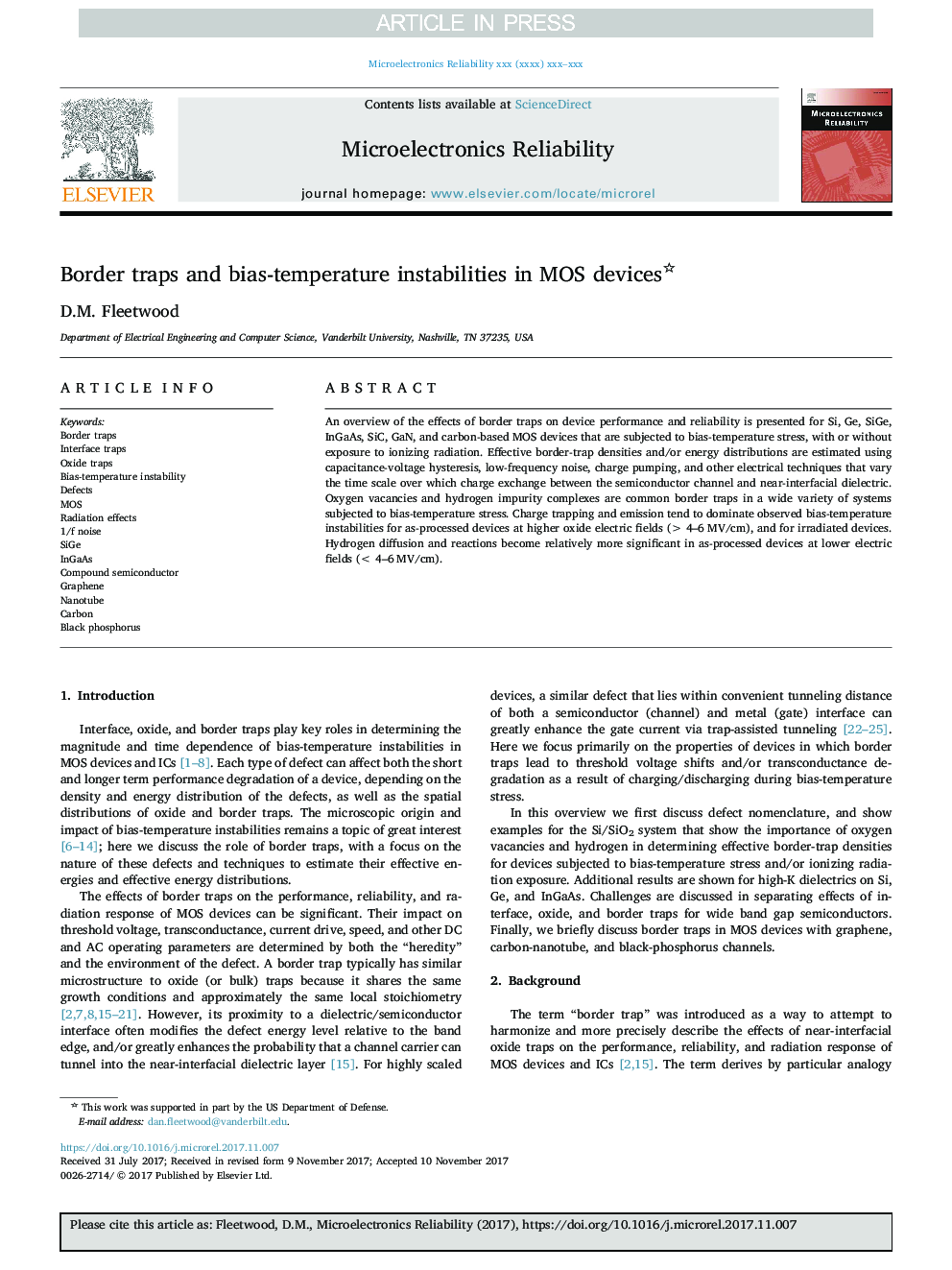| Article ID | Journal | Published Year | Pages | File Type |
|---|---|---|---|---|
| 6946013 | Microelectronics Reliability | 2018 | 12 Pages |
Abstract
An overview of the effects of border traps on device performance and reliability is presented for Si, Ge, SiGe, InGaAs, SiC, GaN, and carbon-based MOS devices that are subjected to bias-temperature stress, with or without exposure to ionizing radiation. Effective border-trap densities and/or energy distributions are estimated using capacitance-voltage hysteresis, low-frequency noise, charge pumping, and other electrical techniques that vary the time scale over which charge exchange between the semiconductor channel and near-interfacial dielectric. Oxygen vacancies and hydrogen impurity complexes are common border traps in a wide variety of systems subjected to bias-temperature stress. Charge trapping and emission tend to dominate observed bias-temperature instabilities for as-processed devices at higher oxide electric fields (>Â 4-6Â MV/cm), and for irradiated devices. Hydrogen diffusion and reactions become relatively more significant in as-processed devices at lower electric fields (<Â 4-6Â MV/cm).
Keywords
Related Topics
Physical Sciences and Engineering
Computer Science
Hardware and Architecture
Authors
D.M. Fleetwood,
